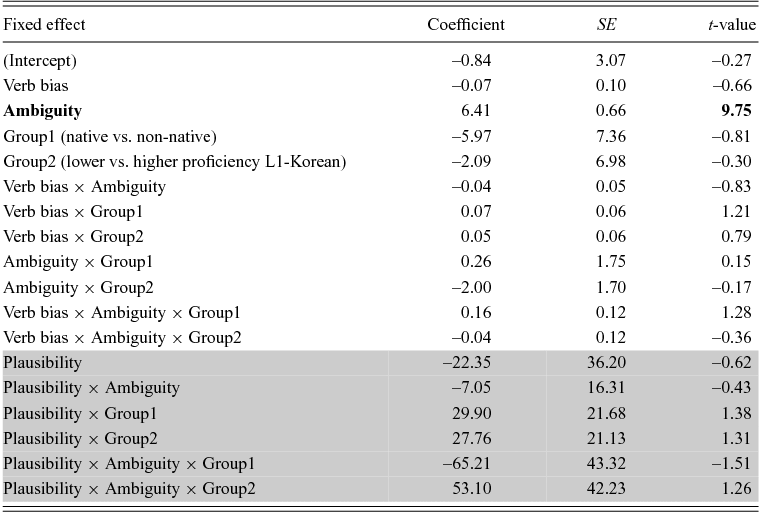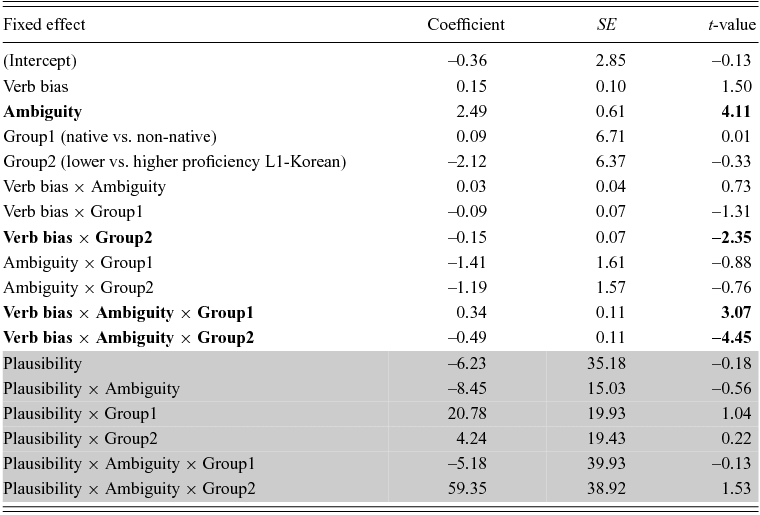Predictors and control variables were not distinguished in Tables 4–8 of the paper by Lee, Lu and Garnsey (2013). The corrected tables are provided below. The authors apologize for these errors.
Table 4. Fixed effect estimates for the mixed effects model of residual reading times at the NP (N = 5556, log-likelihood: –25810). The model also included by-participant and by-item random intercepts. Reliable effects are in bold. Control variables are shaded gray.

Table 5. Fixed effect estimates for the mixed effects model of residual reading times at the disambiguation (N = 5556, log-likelihood: –25360). The model also included by-participant and by-item random intercepts, and by-participant random slopes for verb bias. Reliable effects are in bold. Control variables are shaded gray.

Table 6. Fixed effect estimates for the mixed effects model of residual reading times at the disambiguation: native English speakers (N = 2346, log-likelihood: –10519). The model also included by-participant and by-item random intercepts. Reliable effects are in bold. Control variables are shaded gray.

Table 7. Fixed effect estimates for the mixed effects model of residual reading times at the disambiguation: higher proficiency L2 learners (N = 1666, log-likelihood: –7707). The model also included by-participant and by-item random intercepts. Reliable effects are in bold. Control variables are shaded gray.

Table 8. Fixed effect estimates for mixed effects model of residual reading times at the disambiguation: lower proficiency L2 learners (N = 1544, log-likelihood: –7173). The model also included by-participant and by-item random intercepts. Reliable effects are in bold. Control variables are shaded gray.







